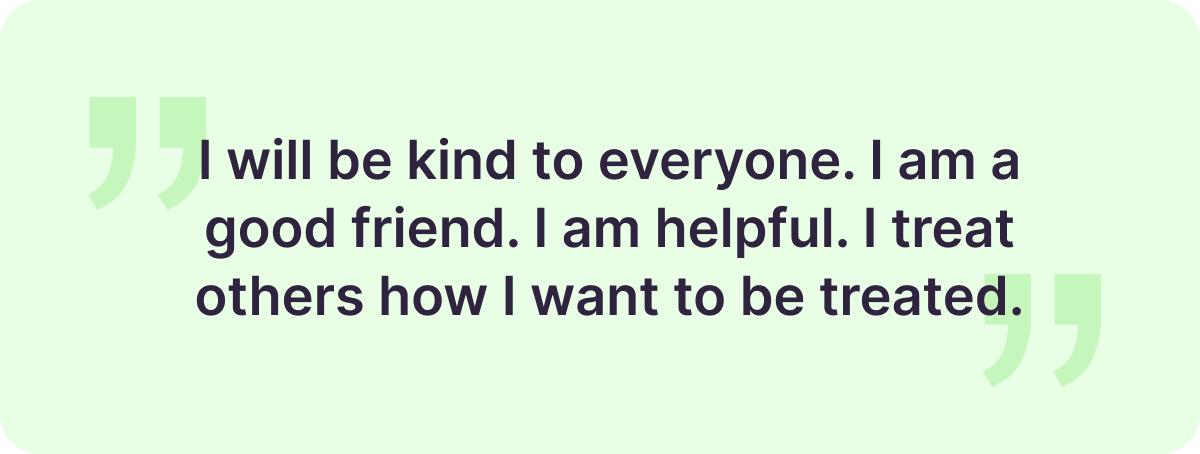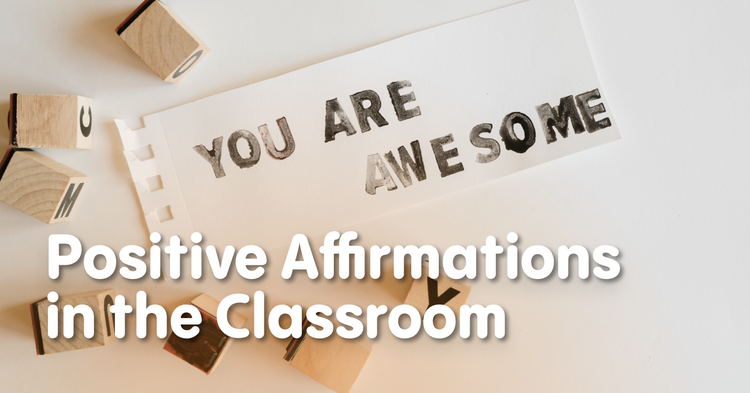The role of educators is crucial in creating a positive learning environment and influencing the mindset of students. Positive affirmations can be a useful tool in achieving this goal. In this article, Allright.com wants to share the significance of using positive affirmations in the classroom, offer some examples of affirmations that can be used, and suggest teaching strategies for implementing affirmations into the classroom culture.
Negative thoughts and self-talk can harm students' mental health, and using positive affirmations has been proven to be effective in changing their mindset and developing the necessary skills for success. By incorporating positive affirmations into the classroom routine, students can benefit from a conducive and supportive learning environment.
Benefits of Using Positive Affirmations in the Classroom
Using positive affirmations in the classroom has many benefits. Here are some of the ways that positive affirmations can help your students:
Boost Confidence: Positive affirmations can help students feel more confident in their abilities. When students repeat positive statements to themselves, they start to believe them, which can help them feel more confident in both academic and personal lives.
Enhance Self-Esteem: Positive affirmations can also improve students' self-esteem. When students believe in themselves, they are more likely to take risks and try new things.
Develop a Growth Mindset: Positive affirmations can help students develop a growth mindset. When students believe that they can improve their abilities through hard work and dedication, they are more likely to put in the effort required to succeed.
Reduce Stress and Anxiety: Positive affirmations can help reduce stress and anxiety. When students feel more confident in themselves, they are less likely to experience unnecessary stress and anxiety in everyday life.
Here are some examples of positive affirmations during the class:

Students frequently tend to focus on comparing themselves to others, believing that others are smarter, more advanced, or more attractive. Our responsibility is to assist them in understanding that they are perfect just the way they are and that they should only compete with their inner selves. The most important thing is to remind them on a regular basis that they are enough, which can transform their mentality from striving to outdo others to striving to be the best version of themselves.

Have you encountered a student who loses motivation at the sight of unfamiliar tasks, diverse problems, or novel games? It's a common experience for me to witness several children quitting even before attempting anything new, different, or slightly complex. Encouraging them with positive affirmations to persist despite challenges imparts a mindset of resilience and tenacity in students. These crucial traits will equip them with the necessary life skills.

Teaching children to feel a sense of belonging within their school and classroom is important for building a community and a family-like atmosphere. It is equally important to show them how to treat each other with kindness and respect. Unfortunately, children often receive labels early on in life, such as shy, aggressive, or troublemaker, which can shape their behavior towards others. By emphasizing the importance of kindness, we can help shift their negative mindset and instill a lifelong belief in the value of treating others with care and consideration.
Positive affirmations are a simple but powerful way of changing the negative thoughts of our students and leading them onto a path of perseverance, self-love, and community kindness. Using positive affirmations in the classroom on a daily basis until it becomes a habit aids the students in instilling these new thoughts, and making them permanent.
We have only been able to share a small portion of the affirmations that occur in classrooms on a daily basis. If you have some that are working for you, please share them with us as well!
Teacher Strategies for Incorporating Positive Affirmations
Here are some strategies for incorporating positive affirmations into your classroom culture:
Introduce Positive Affirmations: Take time to introduce your students to the concept of positive affirmations and explain how they can be used to promote a growth mindset and positive self-talk. Encourage students to use affirmations in their daily lives.
Display Affirmations in the Classroom: Create posters or signs with positive affirmations and display them in the classroom. This will serve as a visual reminder for students to use positive self-talk.
Encourage Students to Create Their Own Affirmations: This will help them take ownership of their learning and build confidence in their abilities.
Use Affirmations During Group Work: Encouraging students to use positive affirmations during group work will help create a positive and supportive learning environment.
Model Positive Self-Talk: As an educator, it is important to model positive self-talk. Use positive affirmations when speaking with your students and encourage them to do the same.
By incorporating these strategies into your classroom, you can create a positive learning environment that supports student success.
Conclusion
Using positive affirmations in the classroom is a powerful tool for promoting a growth mindset, building self-esteem, and fostering a positive classroom culture. By introducing positive affirmations, displaying them in the classroom, encouraging students to create their own, and modelling positive self-talk, educators can create a positive learning environment that supports student success. So, start incorporating positive affirmations into your classroom today and watch your students thrive!









